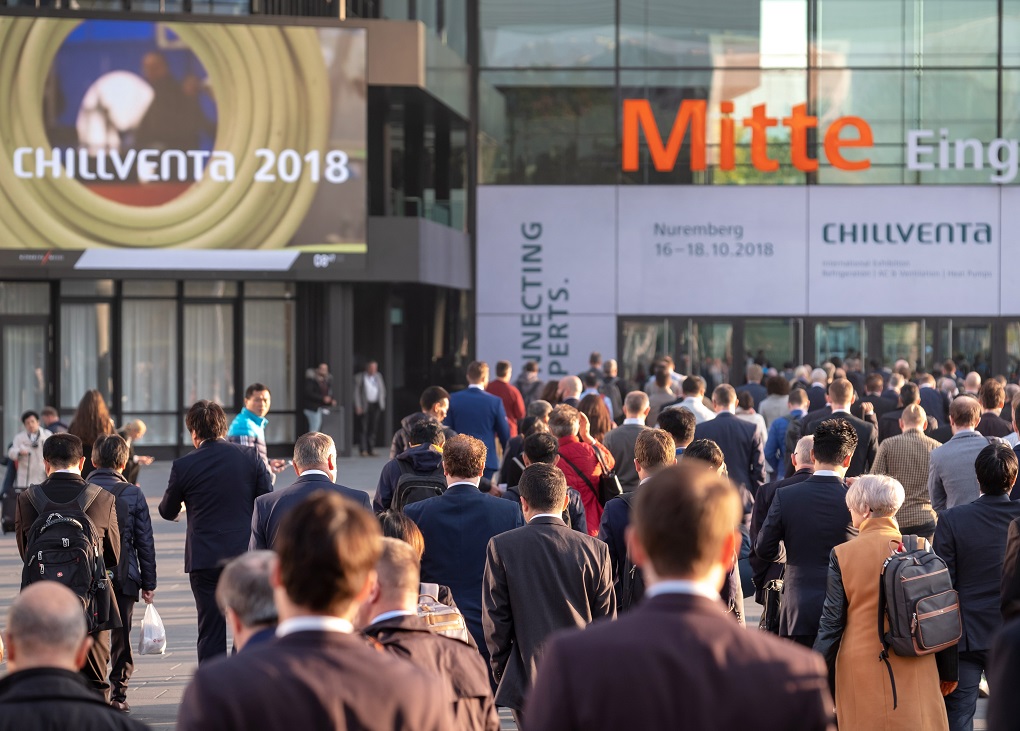Germany’s Chillventa show was held in Nuremburg from October 16–18. The biennial event, now into its 10th year, is touted as “the meeting place for the international refrigeration, AC, ventilation and heat pump community”. In many ways it is a European equivalent to ARBS.
Numbers this year were up. For the first time there were more than 1,000 exhibitors, who displayed their wares to a total of 35,490 visitors. According to organisers, about two-thirds of the exhibitors and around 60 per cent of the attendees were from outside Germany.
One of those international visitors was Mike Baker, M.AIRAH, Managing Director of Australian company AJ Baker & Sons. We caught up with him on his return to get his take on Chillventa 2019.
Why did you attend Chillventa?
This year I went with my national technical manager and our objective was to see how the European market has embraced the use of natural refrigerants and the technology associated with them. It was very evident that natural refrigerants (both CO2 and flammable refrigerants) have been taken up enthusiastically, given the impending HFC phase-down and restrictions in Europe for large installations.
How would you describe the scale and atmosphere of the event?
Chillventa was held in eight halls totalling 75,000m2 of space in the Nuremberg Messe exhibition centre. There were over 1,000 exhibitors this year, and in excess of 35,000 visitors. It is a massive exhibition, and a visitor definitely needs the three days to take in the enormity of it all.
The event was very well supported by the Australian refrigeration industry. There were a pleasing number of Aussie end users and refrigeration contractors at the exhibition. The atmosphere is exciting – there is a real buzz, which is also helped by the supply of “refreshments” during the afternoon on most stands!
What were the main things you took away?
The biggest takeaways we had from Chillventa were the changes to the control systems and how interactive and intuitive they are becoming. Also, the number of manufacturers now building transcritical CO2 packs is impressive, showing that the industry in Europe has embraced the change to natural refrigerants.
The availability of small CO2 condensing units that fill the gap for small installations that are not suitable for multi-compressor packs was also interesting. This will allow the take-up of natural refrigerants across the refrigeration spectrum, and not limit it to large supermarkets.
One of the other takeaways from Chillventa is that Europe is ready for the increase in the charge limit for flammable refrigerants. With another hurdle just achieved with the approval by the IEC subcommittee last week, the increased limit could become a reality by early 2019. This will allow hydrocarbons a larger market of the small refrigeration sector, plugging a gap where CO2 is an expensive option.
What was the feeling around the European HFC phase-down?
The HFC phase-down is very much at the forefront of all Europeans’ minds. With the manufacturers offering alternatives, the attitude is one of “bring it on”. Natural refrigerants also bring lower energy consumption, so this is a win-win for the end user – not only are they compliant to the new EU laws, but they will see a cost saving for the years to come.
I feel that in Australia, the impact of the HFC import quota restrictions have not yet caused a change in the thinking of end users, and some refrigeration contractors. Those who get on board the quickest will reap the benefits in the years to come. Energy prices are not coming down, and electricity and refrigerant prices should be a driver to update technology – as well as being environmentally responsible.
 Mark Vender
Mark Vender


Leave a Reply